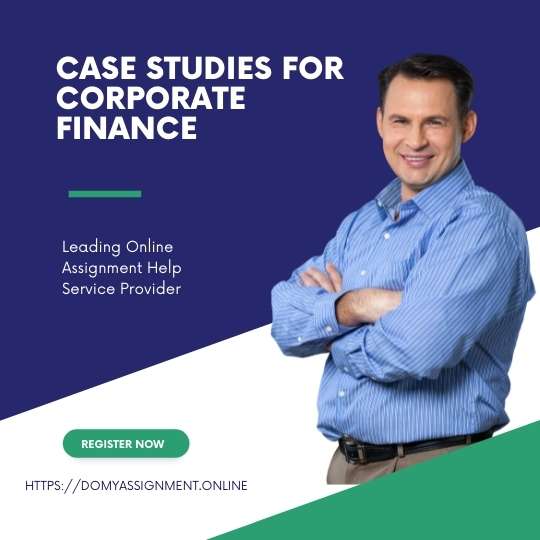While many aspects of the corporate finance industry continue to evolve, one element that remains central to this job function remains the same: the use of case studies to help your decision-making process. While many aspects of the corporate finance industry continue to evolve, one element that remains central to this job function remains the same: the use of case studies to help your decision-making process.

Case studies for corporate finance Looking to learn from past corporate finance decisions? Check out our case studies!
In corporate finance, you’ll have to make decisions from time to time that could have huge financial consequences. To make the best decisions possible, it can be helpful to look at past examples of companies that have made similar decisions to see how they turned out—and why they did or didn’t pan out. If you want to learn from past corporate finance successes and failures, check out these case studies!
Company: Synchronoss Technologies, Inc.
Synchronoss Technologies, Inc. is a provider of cloud solutions and software-based activation for connected devices. The company was founded in 2000 and is headquartered in Bridgewater, New Jersey. Synchronoss has been profitable every year since 2004, but 2017 marked the first time that the company reported net income below its costs of goods sold. In March 2018, the company announced it would be acquired by Siris Capital Group for $1.62 billion.
Industry: Telecom Equipment
The telecom equipment industry is fascinating, with new technology and products being released all the time. In this rapidly changing landscape, it’s important for businesses to stay up-to-date on the latest trends. Corporate finance case studies are a great way to learn about different financing options and how they can impact a business. We’ve compiled a list of some of our favorite telecom equipment industry case studies below.
1) Google Buys Motorola Mobility
In 2011, Google purchased Motorola Mobility in order to boost its intellectual property portfolio. Learn more about this deal in our blog post: Motorola Mobility and Google: Why Did They Combine?
2) Verizon Wireless Issues Zero Coupon Bonds
In 2007, Verizon Wireless issued zero coupon bonds in order to fund their purchase of Alltel. Find out more about these types of bonds by reading our blog post: Zero Coupon Bonds.
3) Sprint Acquires Nextel
Sprint has long been interested in acquiring Nextel because their customer base overlaps significantly. Read more about this acquisition here: The Sibling Rivalry between Sprint and Nextel.
Corporate Finance Case Study With Solution
ABC Corporation is a medium-sized, publicly-traded company in the United States with annual revenues of $10 billion. The company has been profitable for the last three years, but ABC’s CFO is concerned about the future. ABC’s competitors have been investing heavily in new technology and ABC has not. As a result, ABC’s market share has been declining.
The CFO has asked you to prepare a report on whether or not ABC should invest $500 million in new technology. In your report, you will need to discuss the risks and benefits of investing in new technology and make a recommendation to the CFO.
Finance Case Studies With Solutions Pdf

1.When it comes to making major financial decisions for your company, it can be helpful to look at case studies of similar businesses in order to get a better idea of what may work best for you.
2. At Corporate Finance Institute, we offer a range of finance case studies with solutions that can help you make more informed decisions for your business.
3. For example, one of our most popular case studies looks at the role of senior management in decision-making.
4. This particular study provides an in-depth analysis of how different factors can influence the decision-making process, and includes real-world examples to illustrate key concepts.
Case studies include: Google, Coca-Cola, Nike
Case studies from a reputable publishing company
Case Studies For Corporate Finance: Learning From Mistakes And Successes
Cut Through The Clutter And Get Access To What You Need To Succeed
These case studies teach corporate finance from failures and successes
Never make the same mistake twice.
For Corporate Finance Success, Look To Case Studies
Learn from past successes and failures
Comprehensive case studies for in-depth research
New corporate finance professionals rely on Case Studies For Corporate Finance
Corporate Finance Case Study Interview

In today’s business world, it’s more important than ever to understand corporate finance. After all, financial decision-making is a key part of running any successful company.
One great way to learn about corporate finance is by studying real-life case studies. By seeing how other businesses have handled financial challenges, you can get a better sense of what strategies work and which ones don’t. Each year, The Journal of Corporate Finance offers up dozens of new case studies that are perfect for learning the fundamentals of corporate finance. They’re written in an easy-to-understand style that’s designed to appeal to beginners while still providing plenty of insights even for seasoned professionals.
The Journal also provides access to digital versions so you can read them on your computer or tablet whenever you want. Plus, they’re free so there’s no reason not to take advantage!
Orange Computers Corporate Finance Case Study Solution
In order to find the optimal capital structure for Orange Computers, we must first understand the trade-off theory of capital structure. This theory posits that there is a trade-off between the benefits of debt and the costs of debt. On one hand, debt financing provides tax shields and can help a company leverage its assets to increase returns. On the other hand, too much debt can lead to financial distress and bankruptcy. After careful analysis, we have determined that the optimal capital structure for Orange Computers is 60% equity and 40% debt. This mix will provide the company with enough financial flexibility to pursue its growth objectives while minimizing the risk of financial distress.
Case Studies for Corporate Finance
Corporate Finance Case Laws
1. From start-ups to established businesses, all companies need to make sound financial decisions.
2. What works for one company might not work for another, which is why case studies can be so helpful.
3. Learning from the successes and failures of others can help you make the best choices for your business.
4. Our collection of corporate finance case studies covers a wide range of topics, including mergers and acquisitions, investments, and more.
5. Each case study includes key takeaways that you can apply to your own business.
6. Ready to get started? Browse our case studies now!
7. Have a specific question in mind?
Case Study Examples Finance
When it comes to corporate finance, there are always lessons to be learned from past decisions. And what better way to learn than by studying real-life examples?
That’s why we’ve put together a list of case studies for corporate finance. These examples cover a range of topics, including mergers and acquisitions, financial reporting, and more.
So whether you’re looking to learn about the impact of financial reporting on share price or you want to know more about the role of debt in mergers and acquisitions, we’ve got you covered.
Simple Finance Case Study

In this case study, we’ll take a look at a company that made a simple financial decision that had big implications. The company in question is ABC Corporation, and the decision they made was to invest in a new product line. The company purchased $1 million worth of materials and hired five workers to create their new products. They were hoping that by investing in this new product line, they would be able to increase profits and offset declining revenue from one of their current lines. Unfortunately, demand for the new products never materialized, and production ceased after nine months. What could have gone wrong? Read on to find out more about what went wrong with ABC’s decision.
FAQ
What is the difference between equity and debt?
Equity is ownership in a company, which can be in the form of stocks or another type of security. Debt is when a company borrows money and is obligated to repay the funds, plus interest. Equity is riskier than debt, but also has the potential for higher returns. In general, companies use a mix of both equity and debt to finance their operations.
What is the difference between a company’s assets and liabilities?
A company’s assets are everything it owns and can use to generate revenue. This includes cash, investments, property, and equipment. A company’s liabilities are everything it owes. This includes money owed to suppliers, employees, the government, and lenders. The difference between a company’s assets and liabilities is its equity. Equity is what owners have invested in the business minus any debts the business owes.
What is the difference between a company’s income statement and balance sheet?
A company’s income statement shows its profitability, or lack thereof, over a period of time. The balance sheet, on the other hand, is a snapshot of the company’s assets and liabilities at a given point in time. Income statements can be used to trend a company’s financial health over time, while balance sheets can be used to assess the liquidity of a company.
